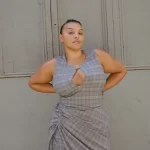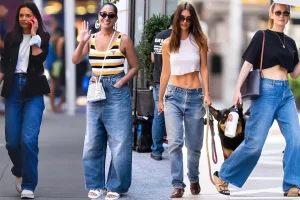In a sea of trends, a reader wonders how to identify a timeless clothing item.
When does a style become a classic? I have read all the discussions about whether skinny jeans are still in, but if a particular style is a classic, isn’t it always in? Especially if it suits your body type? — Nisha, New York City
“Classic” is one of those words everyone throws around but almost no one defines. Most people’s attitudes toward identifying classics seem to mirror Supreme Court Justice Potter Stewart’s, well, classic, words about pornography in Jacobellis v. Ohio: “I know it when I see it.”
The best answers to what constitutes a classic I have ever found come from Italo Calvino’s 1986 essay, published in The New York Review of Books and called “Why Read the Classics?” He was talking about books, but like Justice Stewart’s definition of porn, his words also explain classic clothing pretty well, especially a series of 14 short definitions. My three favorite are:
- “A classic is a book which has never exhausted all it has to say to its readers.”
- “A classic is a work which constantly generates a pulviscular cloud of critical discourse around it, but which always shakes the particles off.”
- “‘Your’ classic is a book to which you cannot remain indifferent, and which helps you define yourself in relation or even in opposition to it.”
Just sub in “garment” for “book” or “work,” and you’ll get the idea.
It’s pretty much impossible to pinpoint a moment when a piece of work becomes a classic because the label is one that gets added in hindsight. History is written by the victors, goes the adage, and, similarly, classics are anointed by the future. (Except, perhaps, for the word “pulviscular,” which as far as I am concerned is an instant classic.)
But one thing to keep in mind, as Lazaro Hernandez and Jack McCollough, the designers of Proenza Schouler, said when we were talking over the issue, is that the whole point of a classic is that it transcends any particular style. One of the reasons a classic is a classic is that it can morph to reflect contemporary styles while never losing its core identity.
For example, consider such fashion classics as white shirts, trench coats, little black dresses and flat-front pants. For each of us, and in each era of time, they contain multitudes. Waists and hems may be higher or lower, shoulders smaller or wider, body cuts loose or form-fitting, but the essential form remains.
That means that when it comes to jeans, it is the concept of jeans themselves that is classic, not whether the jeans are skinny, boyfriend, stonewashed or whatever. That is simply a matter of taste and trend.
Finally, it is also possible to differentiate between clothes that are general classics and clothes that are “classics for you” — which is really just another term for “personal uniform.” But that’s a whole other discussion.
Source : The New York Times




























